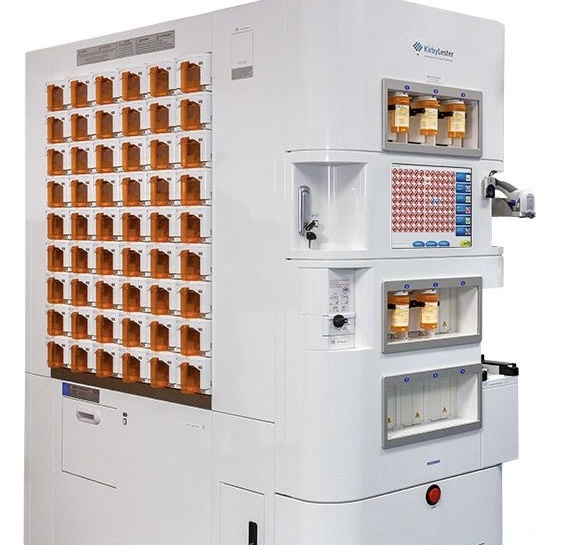Walgreens is taking another step forward as it expands the use of prescription-filling robots. Some drugstore chains are struggling, and to stay in business, they are making changes. Walgreens is one of these drugstores, and to bounce back, it is expanding its newly adopted system.
What pharmacy system does Walgreens use? The simple answer is automation. Since 2021, Walgreens has been using robots in its pharmacy system, and now it wants to expand its use of these robots.
Walgreens is expanding special centers that use robots to fill prescriptions. This move will help fill prescriptions faster, and pharmacy workers will have more time to help patients and give vaccines. The main objective of this automation is already paying off, as robot centers already handle 16 million prescriptions a month. They have also saved Walgreens about $500 million.
Walgreens Revives Robot Prescription Tech Amid Rising Competition
Although Walgreens started using these robot centers in 2021, it stopped expanding them in 2023. The pharmacy and retail chain did this to fix the problems they faced with the robots and improve them. Now that they have made improvements, they are ready to roll out the technology to more stores again.
Walgreens plans to incorporate the use of these robots in more than 5000 stores by the end of the year. One primary reason for this change is the increasing competition from other drugstore chains, including CVS and Amazon. Another reason is that more people want medicine delivered to their homes; automation will help them keep up.
The push for renewed automation comes as Walgreens prepares to go private in a $10 billion deal with Sycamore Partners, which is expected to close by the end of the year. This deal could help the drugstore chain turn things around and bounce back. The goal is to cut costs and improve service. It is also aimed at giving workers less stress, especially after pharmacy staff protests in 2023 showed how overwhelmed they felt.
Other big stores like Walmart and Kroger are also trying similar robot systems. They are doing it even though there is a risk of things going wrong with the machines. However, despite the risks, which can be managed, benefits like saving money and time make automation a big part of the future.
How Does Walgreens Micro-fulfillment Work?
When someone drops off a prescription at Walgreens, the system checks whether it should be filled at the store or sent to a special warehouse. These warehouses, known as micro-fulfillment centers, usually handle medicines that people regularly take and drugs that people don’t need right away.

Inside the center, robots and machines do most of the work. Instead of store workers filling each prescription by hand, pill bottles move along a conveyor belt in a special order. Pharmacy technicians will put medicine into containers, and the prescription robots will disperse them. Pharmacists will then check everything to ensure the medicine and labels are correct. However, there are certain medicines, like inhalers or birth control, that are still packed by hand at special stations. After proper packaging, the prescriptions will be sorted and sent back to the store for pickup.
What if mistakes occur? Although mistakes can be made, safety systems are put in place to catch them. For example, if a worker puts the wrong medicine in the robot, the robot pod will automatically shut down and flash a warning light. However, according to Sarah Gonsalves, a senior certified pharmacy technician at the Mansfield site, workers are also carefully trained to do their jobs correctly so that everything stays safe for patients.
ALSO READ: Menlo Ventures Reports a 500% Spike in Business Spending on AI, Reaching $13.8 Billion This Year
How Walgreens Is Making Its Prescription-Filling Robots Better
After getting feedback from workers and customers, Walgreens made improvements to the micro-fulfillment process. The pharmacy and retail store established new roles, like training managers. These roles are needed to support the process at the site.

Another way Walgreens is improving prescription-filling robots is using smaller pill bottles to save space and money. These robot centers have already cut costs by about 13%. Now, they fill over 170 million prescriptions, which is a higher performance than before.
Walgreens also added tools that let workers track where a patient’s medicine is at any time. However, there are still some issues, like people getting only part of their prescriptions or delays, so the company knows it still has work to do.
ALSO READ: JCPenney Shuts Down: Implications for the Future of Retail
How Walgreens’ Automation System Is Benefiting Pharmacist Staff
Before Brian Gange, an Arizona pharmacy worker, started using the automated facility, he had to go to work every day, knowing that he had to fill tons of prescriptions. This was a lot of work. Now, thanks to something called “micro-fulfillment,” he has way fewer tasks to do.

Because of that, Brian and his team have more time to talk to customers, answer questions, and give health advice. They can also give shots or check blood pressure because there is more time to spare.
Once, he took five minutes to check a customer’s blood pressure and realized it was dangerously high. He sent the person to the hospital, and the next day, the man’s wife came back to thank Brian. She said he might have saved her husband’s life. Brian says having this extra time, thanks to automation, helps them give better care to people.

